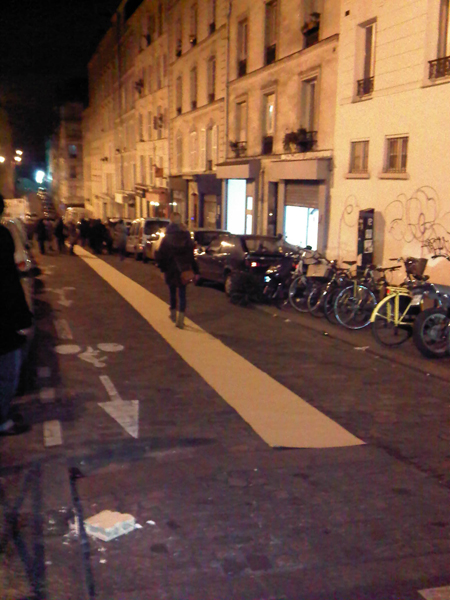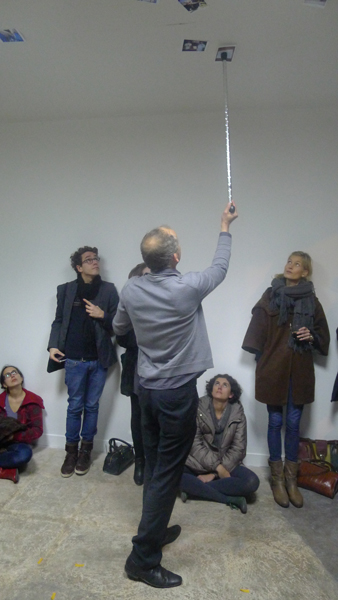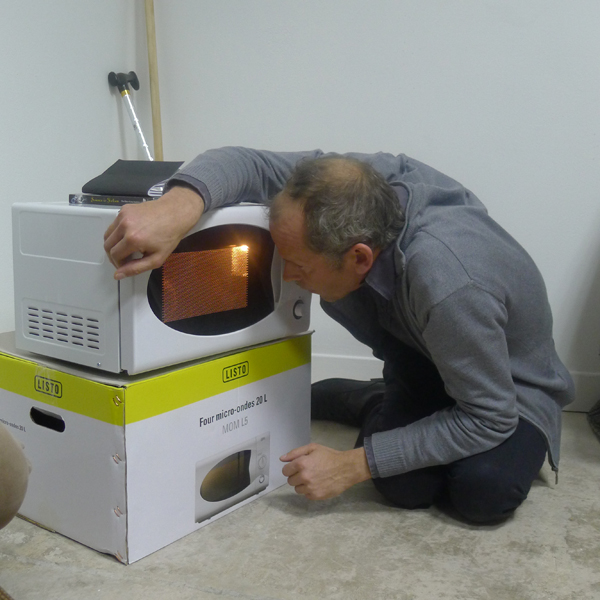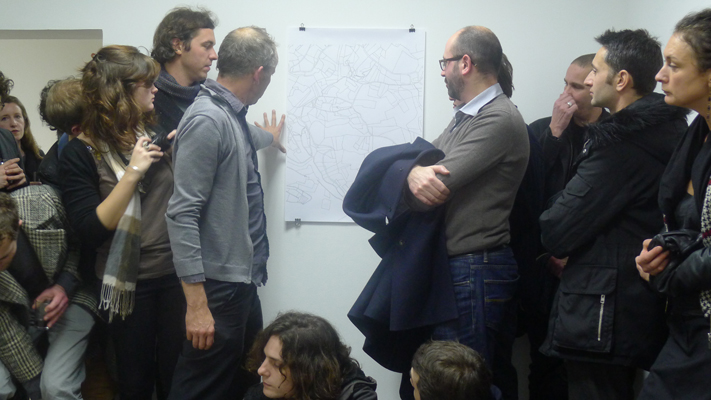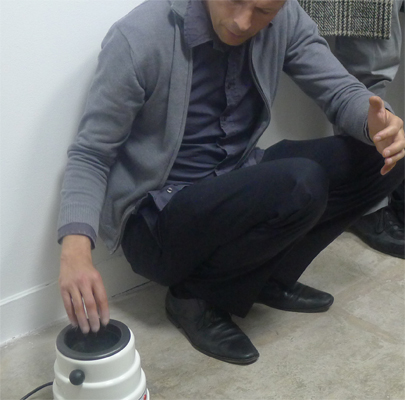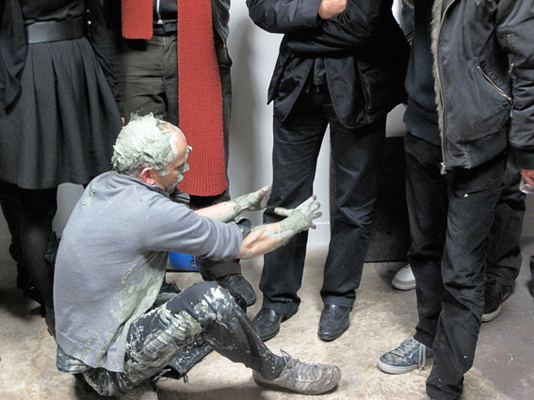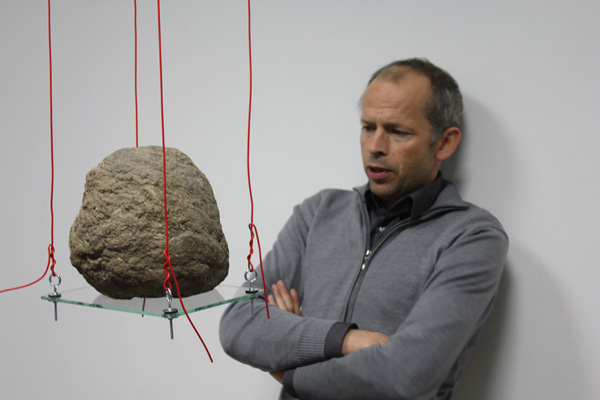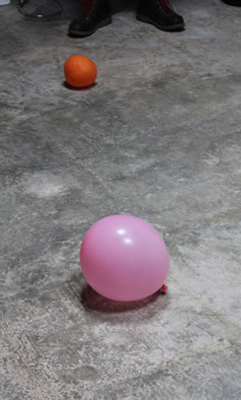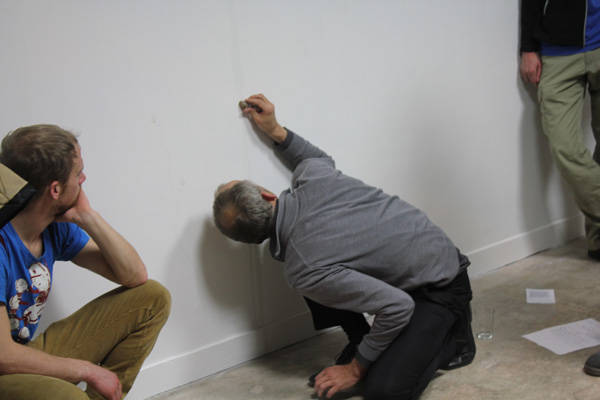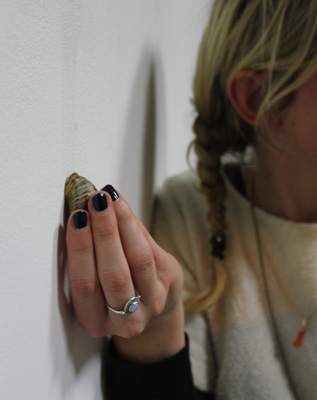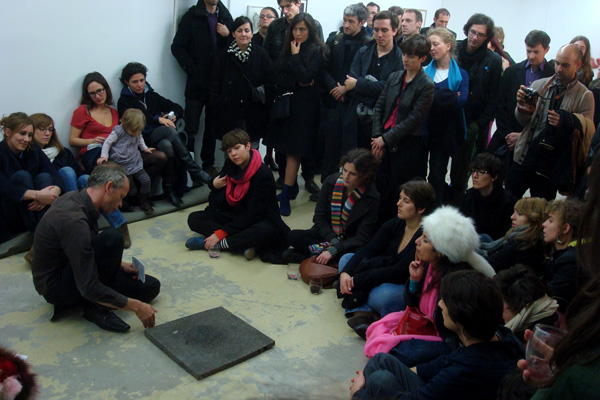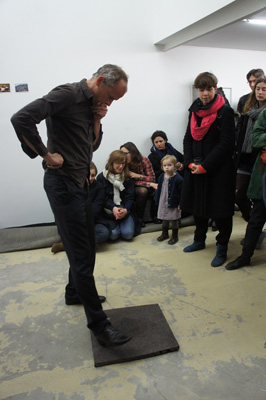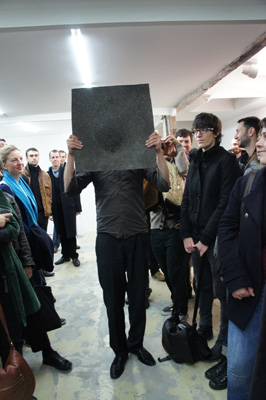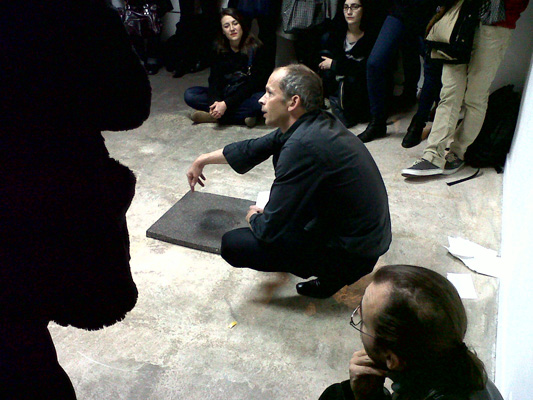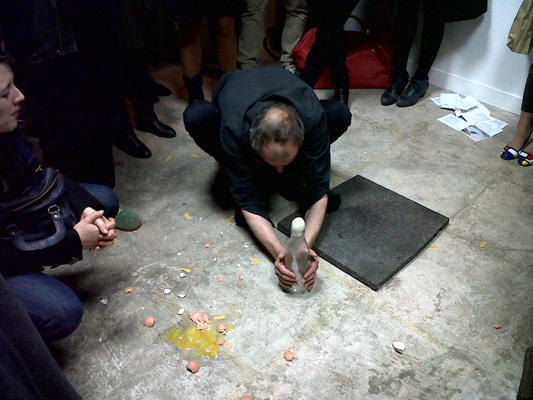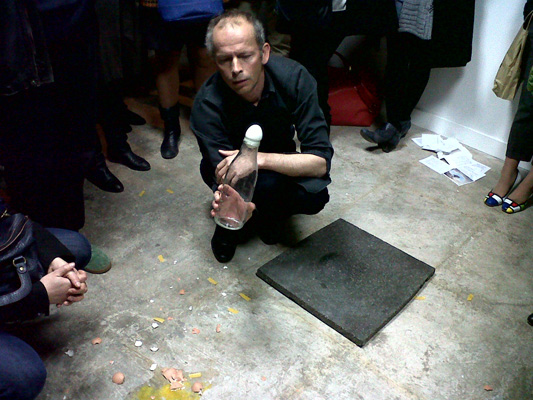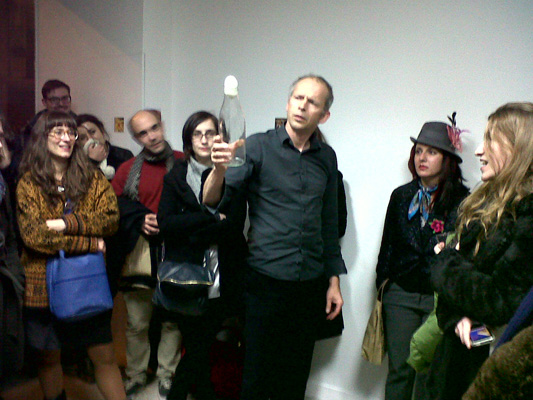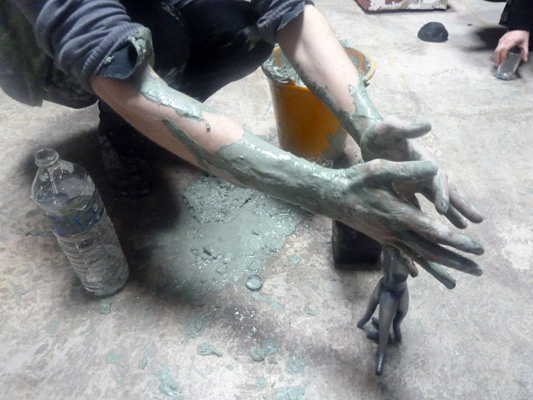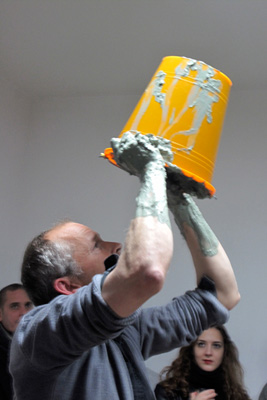A6 / N104
You're driving, you're coming from the south and you're approaching Paris. It won't take very much longer, it's the moment just before arriving. It's the same for the the opposite direction: this is the place where you feel that you are leaving the city. If you were in Mongolia, you would stop the car, here, get out and celebrate this place, like you would celebrate the crossing of a river or the edge of the forest.You see a sign: La Francilienne, sculpteur (sculptor): Alex Garcia, 1992. Apparently you're not alone in thinking this place is worthy of celebration or appropriate for the construction of a monument. You're pleased with this. And it becomes really intriguing since you're not able to discern anything that this sign might refer to. You're not in a hurry and you exit the motorway to go back and have another closer look at the area. On the way back to the south you spot the same sign and again nothing that looks as if it could be announced by it. You try to find a place with an overview of the whole area, you go northwards again and you take a second motorway that crosses yours in the area situated between the two signs. Once more there are signs in both directions but no object. On the north-south axis it takes some 20 seconds to drive from one sign to the other, from east to west it takes about half a minute. 20 seconds are not a long time for a party. Maybe it is just a salutation or a hint to the possibility of a party. At the same time a cry of joy rarely lasts longer than 20 seconds and you won't keep a sip of wine in your mouth for very much longer either. |
|
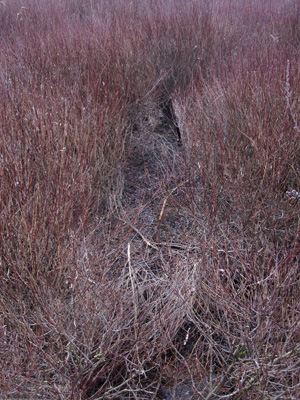
|
|
You can't believe it, you're falling in love with a motorway sculpture. You tell it to a friend. He takes this road twice a day since a couple of month to go to work. He never read the name of the scultor, but usually didn't manage to not see the 12 feet high sculpture that resembles a women walking probably southwards. The sculpture is located at the intersection of the A6 ( the Autoroute du soleil – motorway of or to the sun) and the N104 ( the Francilienne) a motorway running around Paris in a distance of 30 kilometers. You're disappointed, even though you didn't imagine it to be much different: Something big and bulky, a motorway-sculpture. It's only discrepancy was that you could pass without noticing the sculpture. This difference persists. You drive past the same place once more, you slow down and are once more unable to see it.
While you were driving from one sign to the other ten cars have passed in the opposite direction. On the way back there are just as many. The traffic on the N104 is a bit less dense, there are 5 cars per half a minute in both directions. 30 cars in 30 seconds. Considering this is not the rush hour and a couple of cars transport more than one passenger you think it is fair to say, one person per second traverses the area in-between the signs.
The inauguration would have taken place in spring, like the launching of a ship. There would have been flowers, preferably blossoming cherry-trees. But it wouldn't have been the best moment to finish road-works, those are best completed before winter. Since you are uncertain, you decide to not count the year 1992 at all. From January 1993 to December 2010 the sculpture could have been seen once per second. 18 years sum up to 567 million 648 thousand potential viewers. Mona Lisa still has to wait another 20 years until she will have been seen as often as that.
On official visits to a museum German Chancellor Willy Brandt stayed for 30 seconds in front of each artwork. Previously this seemed a short time, by now it feels long. |
|
You're with your friend, he'll show the sculpture to you. None of you sees it on the way south and backwards. You stop the car on the emergency lane at the foot of a small hill right after the intersection of the two motorways. You walk up the hill. Blades of metal-saws are dispersed all around a concrete platform, that served as a base for the sculpture. Two forms that resemble to shoes or hollowed-out feet are the only visible parts that remain of the original sculpture. It makes you think of big game hunting, of elephants. You imagine the heavy body's collapse and how it's being cut up to transportable pieces. You can still see the spots where the falling sculpture hit the ground, you can see imprints of a shoulder, a knee and an ellbow in the clayey soil. Some of the bushes in the vicinity are crushed, the broken branches of others probably mark the passage the pieces were torn on, down to the motorway.
According to Fabien Giraud tears of Jesus Christ have been searched for and found in a crusade some 800 years ago and are now being kept in a church in France. Similar to the pieces of a holy sponge that
are kept elsewhere. You look around. The shoes of the figure and two floodlights remain attached to the platform. The legs of the figure have been cut above the ankle, most likely because it is easiest that way. The only trees that are cut down at floor level are the ones that will be submerged in the construction of a dam. Some bathing accidents can be avoided by this. None of the remains of the sculpture is higher than the surrounding bushes. It is an ideal object. It is unlikely that someone will think of turning the lights off. At night the sculpture is thus even more evidently absent. Two cones of light, crossing each other above a small hill situated between two bridges next to a motorway. If there is fog it becomes a static luminescent cloud. |
|
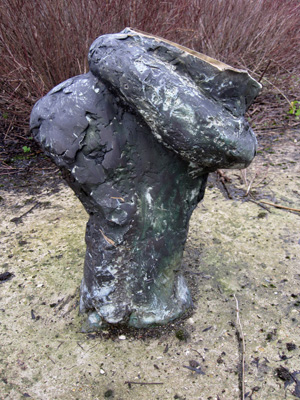
|
